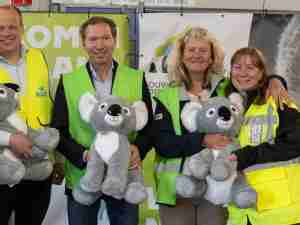The airports' existing glide slope and localizer will be replaced with new equipment. The existing equipment is manufactured by Wilcox, also known as Thales, a world-wide manufacturer of radio navigation hardware. These items are precision radio based aircraft approach tools, which assists pilots in determining an aircraft's position referenced to the touchdown area of the runway. This new equipment will be adjacent to and for use on the 7,000 foot runway 30.
Distance measuring equipment (DME) will be installed on runway 30 for the first time. The DME will assist a pilot in determining an aircraft's distance from the runway.
Additionally, and for the first time, runway visual range equipment (RVR) is being installed at the airport. The RVR equipment will be placed for use on runway 30. This equipment measures approach visibility and is manufactured by Teledyne, an engineering systems manufacturer, based in Los Angeles, CA.
The glide slope, localizer, DME and RVR are being installed on runway 30. Runway 30 currently has an operational instrument landing system (ILS), which consists of a glide slope, localizer and locator beacon. The latter equipment is aged and difficult to repair compared to the new state of the art units that will replace it.
The RVR coupled with recently installed center line lighting on runway 30 will enable the airport to utilize the full advantage of a category one (CAT I) instrument landing system and thus allowing aircraft to land safely in poor visibility conditions.
The new equipment is being funded by a $1.2 million grant from the FAA Facilities and Equipment Division. The actual installation work will be managed by the FAA. Gary/Chicago International Airport Director, Paul Karas, states, "The new equipment builds the airport's capabilities to better serve our growing base of customers including private and commercial pilots, including those serving passenger and cargo airlines, and continues our efforts to improve safety and operational efficiency."










